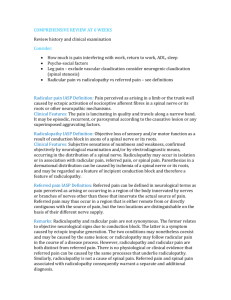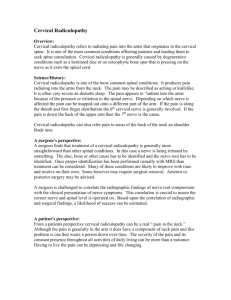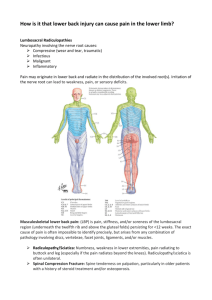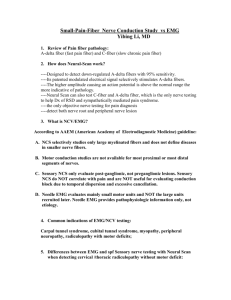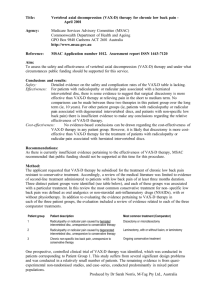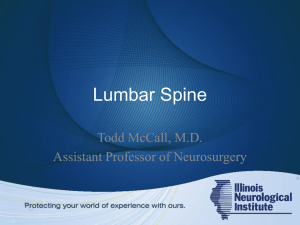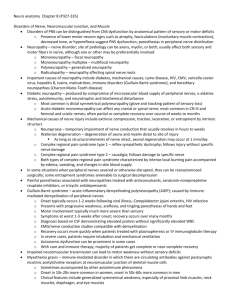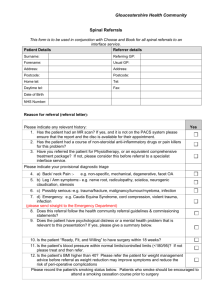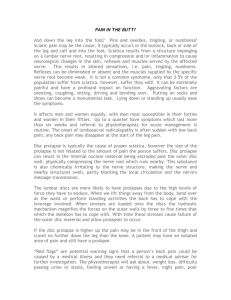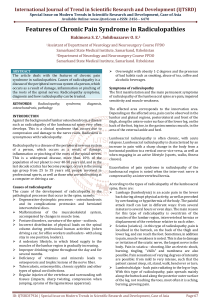Doc - Shaw Chiropractic
advertisement
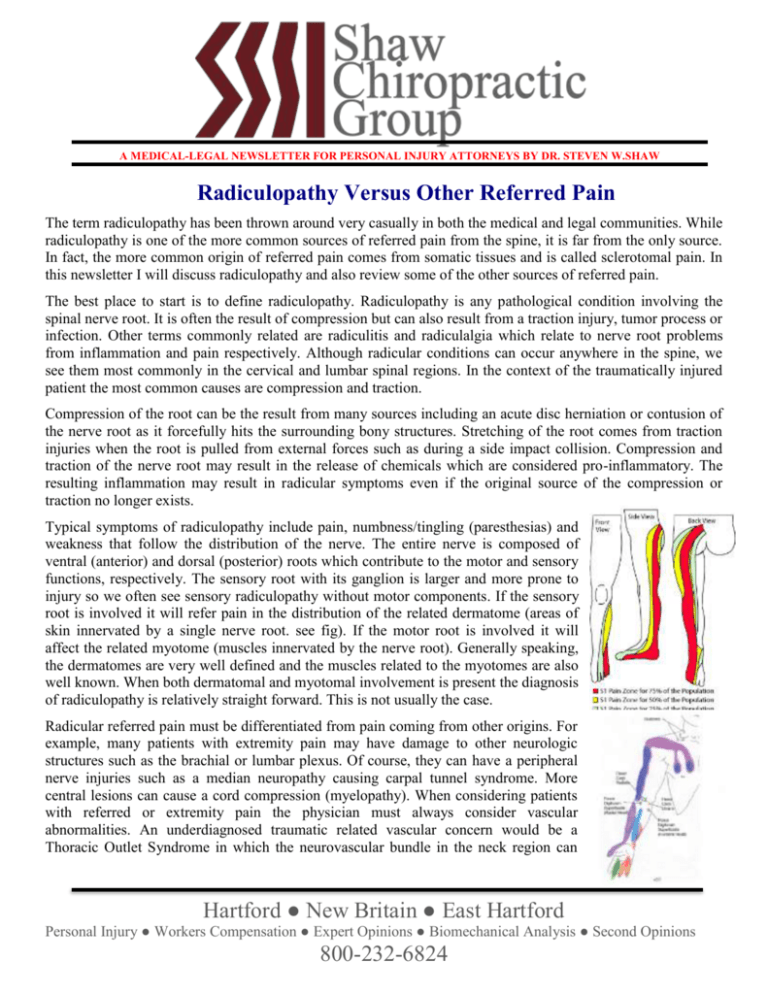
A MEDICAL-LEGAL NEWSLETTER FOR PERSONAL INJURY ATTORNEYS BY DR. STEVEN W.SHAW Radiculopathy Versus Other Referred Pain The term radiculopathy has been thrown around very casually in both the medical and legal communities. While radiculopathy is one of the more common sources of referred pain from the spine, it is far from the only source. In fact, the more common origin of referred pain comes from somatic tissues and is called sclerotomal pain. In this newsletter I will discuss radiculopathy and also review some of the other sources of referred pain. The best place to start is to define radiculopathy. Radiculopathy is any pathological condition involving the spinal nerve root. It is often the result of compression but can also result from a traction injury, tumor process or infection. Other terms commonly related are radiculitis and radiculalgia which relate to nerve root problems from inflammation and pain respectively. Although radicular conditions can occur anywhere in the spine, we see them most commonly in the cervical and lumbar spinal regions. In the context of the traumatically injured patient the most common causes are compression and traction. Compression of the root can be the result from many sources including an acute disc herniation or contusion of the nerve root as it forcefully hits the surrounding bony structures. Stretching of the root comes from traction injuries when the root is pulled from external forces such as during a side impact collision. Compression and traction of the nerve root may result in the release of chemicals which are considered pro-inflammatory. The resulting inflammation may result in radicular symptoms even if the original source of the compression or traction no longer exists. Typical symptoms of radiculopathy include pain, numbness/tingling (paresthesias) and weakness that follow the distribution of the nerve. The entire nerve is composed of ventral (anterior) and dorsal (posterior) roots which contribute to the motor and sensory functions, respectively. The sensory root with its ganglion is larger and more prone to injury so we often see sensory radiculopathy without motor components. If the sensory root is involved it will refer pain in the distribution of the related dermatome (areas of skin innervated by a single nerve root. see fig). If the motor root is involved it will affect the related myotome (muscles innervated by the nerve root). Generally speaking, the dermatomes are very well defined and the muscles related to the myotomes are also well known. When both dermatomal and myotomal involvement is present the diagnosis of radiculopathy is relatively straight forward. This is not usually the case. Radicular referred pain must be differentiated from pain coming from other origins. For example, many patients with extremity pain may have damage to other neurologic structures such as the brachial or lumbar plexus. Of course, they can have a peripheral nerve injuries such as a median neuropathy causing carpal tunnel syndrome. More central lesions can cause a cord compression (myelopathy). When considering patients with referred or extremity pain the physician must always consider vascular abnormalities. An underdiagnosed traumatic related vascular concern would be a Thoracic Outlet Syndrome in which the neurovascular bundle in the neck region can Hartford ● New Britain ● East Hartford Personal Injury ● Workers Compensation ● Expert Opinions ● Biomechanical Analysis ● Second Opinions 800-232-6824 A MEDICAL-LEGAL NEWSLETTER FOR PERSONAL INJURY ATTORNEYS BY DR. STEVEN W.SHAW cause either vascular and/or neurologic compromise in the upper extremity. Other referred pain considerations would be Reflex Sympathetic Dystrophy (now called CRPS) resulting from abnormal function of the sympathetic nervous system. This is commonly traumatic arising from fracture, surgery or other traumatic causes. With injuries to the musculoskeletal system, not involving the nerves, we very commonly see referral of pain from somatic connective tissues such as discs, ligaments, muscles and tendons. This is called sclerotomal or sclerotogenous pain. The explanation of the pain referral mechanism is hypothesized to be that the tissues have a related embryological origin. This is why heart attack sufferers may have neck and arm pain or acute gall bladders will have referral to the back. In a similar manner, the connective tissue structures have referred pain patterns, many of which appear to be following similar patterns as the dermatomes. The chart to the right shows some referral patterns from muscles. Unlike radiculopathic abnormalities that can be diagnosed with Evoked potentials, EMG and NCVs, these forms of pain referral cannot be measured using imaging or physiologic studies. Hartford ● New Britain ● East Hartford Personal Injury ● Workers Compensation ● Expert Opinions ● Biomechanical Analysis ● Second Opinions 800-232-6824
